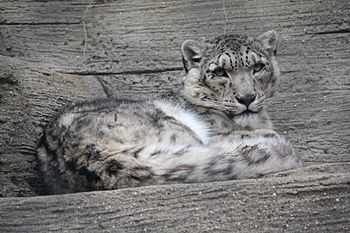Flora of Pakistan
| Part of a series on |
| Wildlife of Pakistan |
|---|
 |
|
Biodiversity Fauna and Flora
|
|
Conservation Protected areas
|
|
Organizations National
Ministry of Environment (Pakistan) · Pakistan Environmental Protection Agency · Dhodial Pheasantry · Zoological Survey Department of Pakistan · Sindh Wildlife Department · Punjab Wildlife Department · Khyber Pakhtukhwa Wildlife Department · Baluchistan Wildlife Department · Gilgit Baltistan Wildlife Department · Himalayan Wildlife Foundation · National Institute of Oceanography (Pakistan) International
|
|
Related topics Ecoregions · Forestry · Fishing Agriculture · Tourism Botanical and Zoological gardens Environmental issues |
Pakistan's native flora reflects its varied climatic zones, which range from arid and semi-arid to temperate and tropical. For further details of habitats, see Ecoregions of Pakistan, Forestry in Pakistan and Wildlife of Pakistan.
Distribution
Northern highlands and valleys
Pakistan has conifer forests in most of the northern and north-western highlands. These occur from 1,000 to 4,000 m altitudes. Swat, Upper Dir, Lower Dir, Malakand, Mansehra and Abbottabad districts of Khyber Pakhtunkhwa (formerly North-West Frontier Province) are the main areas covered with coniferous forests. Pindrow fir (Abies pindrow) and Morinda spruce (Picea smithiana) occupy the highest altitudes, deodar (Cedrus deodara) and blue pine (Pinus wallichiana), the intermediate heights, and chir pine (Pinus roxburghii), occupy the lower areas.
Eastern plains and deserts
In most of Punjab and Sindh, the Indus plains have many fluvial landforms that support various natural biomes including tropical and subtropical dry and moist broadleaf forestry as well as tropical and xeric shrublands (deserts of Thal in Punjab, Tharparkar in Sindh) and kair (Capparis aphylla) which provide firewood. The riparain woodlands grow in narrow belts along the banks of River Indus and its tributaries. Main tree varieties are of sheesham and babul and main shrub varieties are reed beds and tamarisk (Tamarax dioica) bushes.
Wetlands and coastal regions
In the south of Sindh are Indus River Delta in west and Great Rann of Kutch in east. The largest saltwater wetland in Pakistan is the Indus River Delta. Unlike many other river deltas, it consists of clay soil and is very swampy. The Great Rann of Kutch below the Thar Desert is not as swampy and exhibits shrubland vegetation of rather dry thorny shrubs as well as marsh grasses of Apluda and Cenchrus. Other saltwater wetlands are located on the coast of Balochistan such as at Sonmiani and Jiwani. These and Indus River Delta support mangrove forestry, mainly of species Avicennia marina.
Cultural significance
| Title | Symbol | Picture |
|---|---|---|
| National tree | Deodar Cedar (Cedrus deodara) | |
| National flower | Poet's Jasmine (Common Jasmine) | |
| National fruit | Mango (Mangifera indica) | |
See also
- Ecoregions of Pakistan
- Wildlife of Pakistan
- Forestry in Pakistan
- Fauna of Pakistan
- Trees of Pakistan
- Wildflowers of Pakistan
- List of botanical gardens in Pakistan
External links
| Wikimedia Commons has media related to Flora of Pakistan. |
- Missouri Botanical Garden - Inventory of the Plants of Pakistan
- efloras.org - Flora of Pakistan
- Lahore Gardening Blog - Encyclopaedia of flowers
| ||||||||||||||
| ||||||||||||||||||||||||||